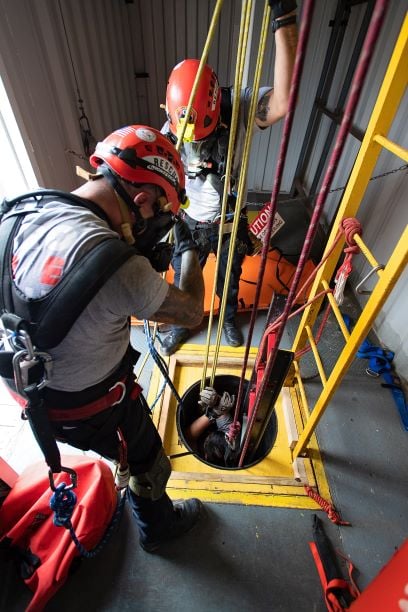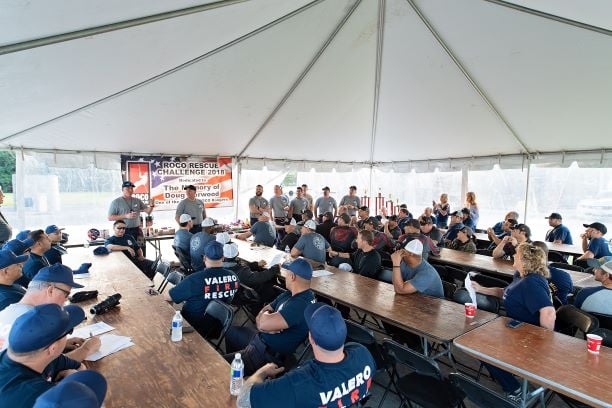“It’s an intense two days. It’s exhausting and hard, but it’s also a lot of fun. I tell all my guys, ‘you’ll work your butt off at Rescue Challenge, but you’ll love every minute it.’”
- Randy Pickering, Asst Fire Chief, Valero Wilmington Refinery
 Valero Wilmington has attended Roco Rescue Challenge nearly every year since 1991 and has a stellar track record in the annual event. The safety and effectiveness of the team is a commitment taken very seriously by the group, and Challenge helps them hone their skills to the max, enhancing their culture of safety.
Valero Wilmington has attended Roco Rescue Challenge nearly every year since 1991 and has a stellar track record in the annual event. The safety and effectiveness of the team is a commitment taken very seriously by the group, and Challenge helps them hone their skills to the max, enhancing their culture of safety.“We use Roco Rescue Challenge as a motivator for all our rescue teams and a reward for those who are selected to go,” says Randy.












